
(Nutt.) Haworth, Synopsis Plantarum Succulentarum 82, 1819
Herbarium; Herbarium; Herbarium; Herbarium; Herbarium; Herbarium; Herbarium; Herbarium; Herbarium (Ontario, Canada); Painting
Original Citation
What is Opuntia fragilis?
Opuntia fragilis is one of the smallest opuntias and one of the most cold-hardy. It is found throughout parts of the West and the northern Midwest. Frequently O. debreczyi is frequently misinterpreted as O. fragilis or a hybrid of O. fragilis in the Mountain West and the Great Basin.
Details
Dr. Eric Ribbens writes:
Opuntia fragilis (Nutt.) Haw. is a small, cold-hardy prickly pear. It has pads 1 to 3 cm long and longer than wide, and spines can be longer than the pad, or short.
This Opuntia forms a sprawling prostrate mat up to 30 cm in diameter; rarely are there erect chains of more than 2 or 3 pads. The cladodes of this Opuntia are remarkable because they are ‘fragile’. They separate easily–sometimes with just a touch.
Flowers are large and yellow, with creamy greenish to reddish centers. Older plants often develop a thick rootstock at the base of the plant. Large plants can be comprised of hundreds of pads on numerous flat chains. The pads are often rather rounded instead of flat, and that it does not ever set fruit in the Midwest.”
O. fragilis is hexaploid.
Other Notes
Britton and Rose reported that O. fragilis is seldom in flower and even less often in fruit.
O. debreczyi is a small western opuntia that is about twice the height/size of O. fragilis. It is frequently misinterpreted as O. fragilis and thus distorts knowledge of the actual distribution of the species. The two species are known to occur together. Intermediates are not found.
Many garden hybrids are known. They are excellent garden or pot plants because of their small size and ability to withstand many conditions. Some are brightly colored and all are cold-hardy.
For more information about the taxonomy, appearance, geographic distribution, and ecology of O. fragilis see the following publications by Dr. Eric Ribbens.
- Opuntia fragilis taxonomy, distribution, and ecology (Haseltonia 14:94-110, 2008)
- Opuntia fragilis in Illinois Cactus and Succulent Journal 80:119-122, 2008)
- Opuntia fragilis in Iowa (Cactus and Succulent Journal 81:9-13,40, 2009)
- Opuntia fragilis in Michigan (Cactus and Succulent Journal 80:240-244, 2008)
- Imperfect flowers of Opuntia fragilis in Kaladar, Ontario, Hazeltonia, DOI: 10.2985/026.020.0105
Permission to reproduce some materials for this page through the courtesy of the Cactus and Succulent Society of America and Dr. Ribbens. The journal articles are copyrighted and may not be reproduced elsewhere.

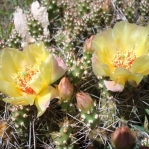
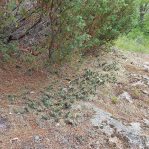
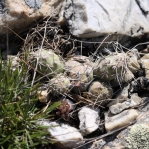
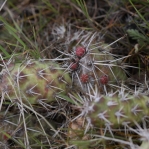
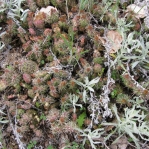
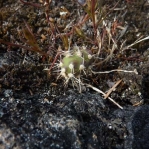
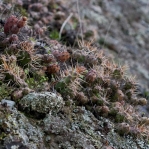
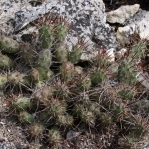
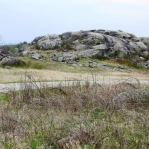
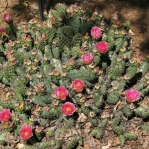
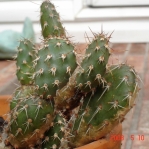
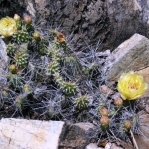
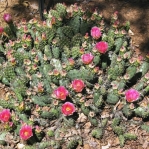
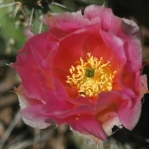
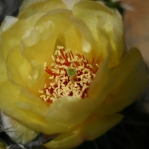
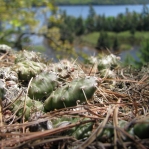
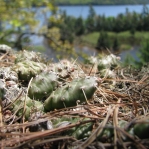
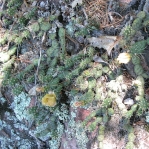
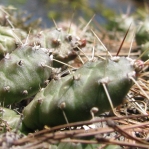
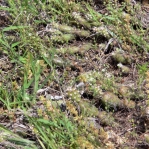
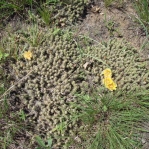
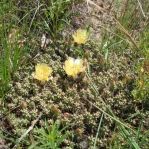
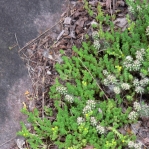
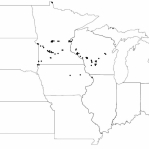
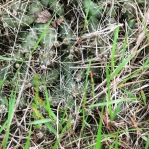
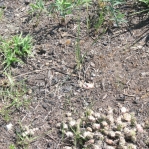
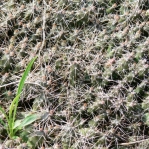
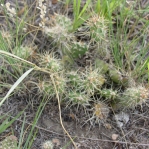
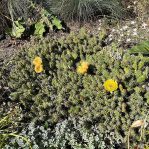
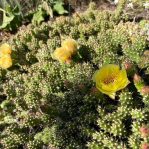
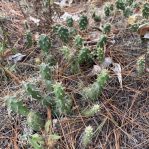
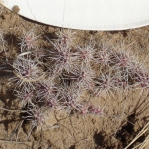
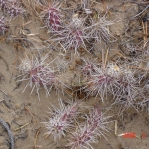
Many years ago, I found what to a casual observer would be Opuntia fragilis; and true to form, the cladodes separate very easily from the cylindrical pads and the plants were only a few centimeters high, mostly prostrate. The only problem was: they were found behind large sand dunes on Ossabaw Island, Georgia, some 1,500 miles or more from their known range in the Midwest. Either this is a fragilis-like race of humifusa or they were brought in by parties unknown and naturalized behind these dunes. Or, they are a relict population from the Pleistocene. Can you shed any light on this? I have no specimens nor photographs at the moment. But I have contacts on the coast who might be able to assist with this, given enough time. Can you weigh in on this question?
Hi Mark,
Thanks for your note.
I can’t begin to guess what events can explain find.
I do know that O. fragilis is found in the upper Midwest. Perhaps it was O. fragilis?
Here is a link. https://www.opuntiads.com/opuntia-fragilis/
Joe Shaw
I think I found a partial answer right here! O. pusilla is the one I encountered on the Georgia coast, and it certainly appears to be a close phenotype to fragilis. Is it possible that pusilla is diploid and fragilis a hexaploid variant of the same species? W. Barthlott did a study on Rhipsalis baccifera and discovered that the hardy strain that lived on hammocks in the Everglades (subject to rare frosts) were all tetraploid, while the more cold-sensitive ones deeper in the tropics were all diploid. Is the same thing going on with O. fragilis?